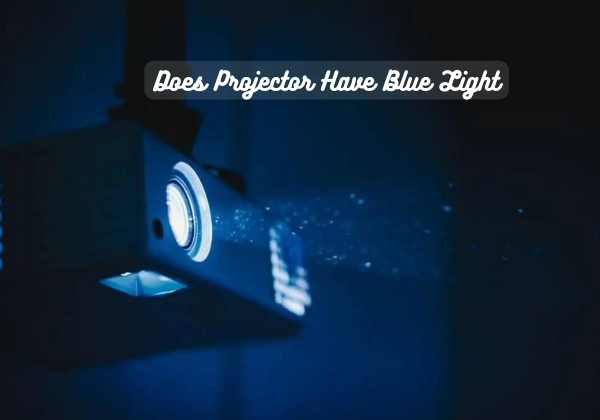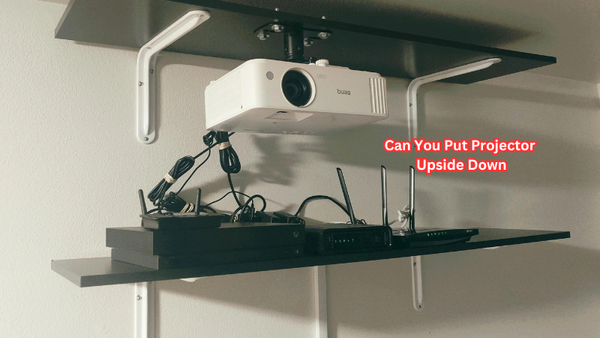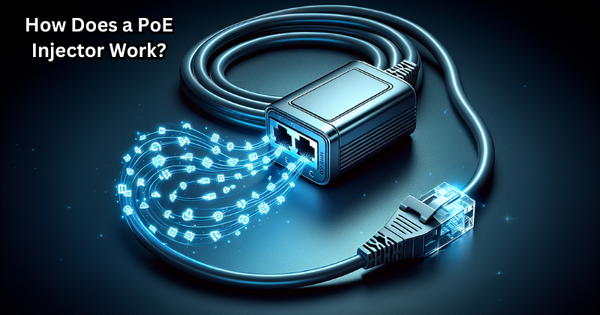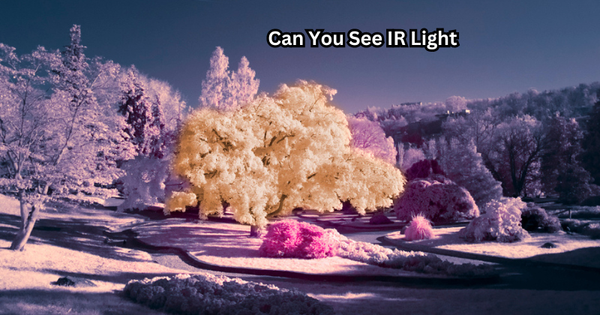Projectors have become increasingly popular for presentations, movie nights, and home entertainment. However, as technology advances, concerns regarding the impact of blue light emitted by projectors have arisen.
Blue light is a high-energy light wave that can potentially cause eye strain, fatigue, and sleep disturbances. Since projectors emit light directly into our eyes, it is crucial to understand the potential risks associated with prolonged exposure to blue light.
In this article, we will explore the effects of blue light emitted by projectors and discuss measures that can be taken to minimize its impact, ensuring a safer and more enjoyable viewing experience.
Understand The Blue Light In the Projector?
Projectors use a lamp or LED light source to produce images by reflecting light off the screen. The color of the projected image is determined by the combination of red, green, and blue (RGB) lights. Blue light has a shorter wavelength compared to other colors in the spectrum, making it more intense and potentially harmful. The visible light spectrum ranges from 400 to 700 nanometers (nm), with blue light falling between 400-500 nm.
Emitting blue light is essential for creating a bright and vivid image, but too much exposure can be problematic. Blue light glasses and filters have become popular options to reduce the impact of blue light, but do projectors emit enough blue light to cause harm?
The amount of blue light emitted by projectors varies depending on the type of light source used. Traditional projectors that use lamps emit a significant amount of blue light, whereas LED projectors produce less blue light due to their different technology. However, even with LED projectors, some models may still emit high levels of blue light.
The Mechanism Of Blue Light Emission In Projectors
The blue light emitted by projectors is most intense when the projector is used in a dark room. This is because, in a low ambient light environment, the projector's contrast ratio must be increased to create a brighter image, increasing blue light emission.
Let's briefly explore how projector emits blue light and its impact, and assess its safety in comparison to TVs and phones.
Blue Light Emission In Projectors
Projectors emit blue light through the use of a color wheel, which is a spinning disc with red, green, and blue filters that determine the projected image's color. As the disc spins, each color passes through the lens and combines to create various shades. Depending on how long each primary color stays in front of the lamp or LED source, a different amount of blue light is emitted.
Blue Light And Its Effects
Blue light has been shown to have both positive and negative effects on the human body. Exposure to blue light during the day can help regulate our circadian rhythm, leading to better sleep at night.
However, prolonged exposure to blue light at night can suppress melatonin production, making it difficult for us to fall asleep. In addition, excessive exposure to blue light can cause eye strain, fatigue, and even damage the retinal cells in our eyes.
Reflection And Indirect Blue Light
Unlike TVs and phones, projectors emit light directly into the viewer's eyes, making it more intense. However, most of the blue light emitted by projectors is reflected off the screen and scattered in various directions before reaching our eyes.
This reflection and diffusion of light can reduce the impact of blue light on our eyes, making it less harmful compared to direct exposure from other devices. Projector blue light glasses and filters can also help reduce the impact of indirect blue light.
Comparing Projectors To TVs And Phones
In comparison to projectors, phones and TVs emit lower levels of blue light. This is because these devices have a direct source of light that does not need to pass through filters like in projectors.
However, since we tend to hold our phones closer to our eyes and spend more time looking at them, the impact of blue light from phones and TVs can still be significant. Projectors produce blue light in a larger area, making their impact less severe compared to phones and TV blue light.
How Does Blue Light Damage Your Eyes
Exposure to blue light can cause eye strain and discomfort, leading to dry or irritated eyes. Prolonged exposure can also damage the retinal cells in our eyes, causing vision problems in the long run. It is crucial to take precautions when using projectors to minimize the harmful effects of blue light on our eyes.
Here are key considerations about blue light, encompassing that emitted by projectors, which may pose risks to eye health:
Projector Blue Light:
Projectors emit blue light directly into our eyes, making it more intense and potentially harmful. However, most of the blue light emitted by projectors is reflected and scattered before reaching our eyes, reducing its impact.
Retina Damage:
Blue light is known to cause damage to the retinal cells in our eyes, potentially leading to vision problems in the long run. Studies show that prolonged exposure to blue light falls can cause retinal cell death.
Eye Strain:
Prolonged exposure to blue light can lead to eye strain, fatigue, and dry or irritated eyes. It may also disrupt sleep patterns when exposed at night. Further, exposure to blue light can also lead to headaches and migraines in some individuals. Be aware several electronic gadgets emit blue light including, LED TVs, Tablet screens as well as compact fluorescent light bulbs.
Macular Degeneration:
Blue light exposure has been linked to the development of age-related macular degeneration (AMD), a leading cause of vision loss in older adults. Plus, it may worsen existing macular degeneration in those who already have the condition.
Sleep Disturbance:
Exposure to blue light at night can suppress melatonin production, making it difficult to fall asleep. This can lead to sleep disturbance and other sleeping disorders. In addition, inadequate sleep can also increase the risk of developing chronic health conditions.
These harmful effects of blue light highlight the need to take precautions while using projectors or other devices that emit blue light. Options such as blue light glasses, projector filters, and taking breaks can help reduce the impact of blue light on our eyes.
Measures To Minimize The Impact Of Blue Light
While projectors emit varying levels of blue light, it is essential to take measures to minimize its impact on our eyes. Here are some practical ways to reduce the risks associated:
- Limit the use of projectors in dark environments and adjust the contrast ratio to reduce blue light emission.
- Position yourself at a safe distance from the projector screen to minimize direct exposure to blue light. If you stares at the lens barrel of a projector produces direct blue light that is more focused and harmful than simply staring at a TV screen so be careful.
- Take breaks during prolonged use of projectors, especially in low ambient lighting conditions.
- Use blue light glasses or filters when using projectors for an extended period. These can help block out blue light and reduce the strain on our eyes.
- Avoid using projectors at night, as this can disrupt our sleep patterns due to exposure to blue light. Furthermore, avoid using phones or other devices that emit blue light before bedtime.
With the proper precautions, the impact of blue light from projectors can be minimized, ensuring our eyes' health and well-being. So if you're wondering, "Does a projector have blue light?" remember that while it does emit blue light, taking these precautionary measures can help mitigate its effects on our eyes. So whether you use a traditional lamp-based projector or an LED projector, make sure to take the necessary steps to protect your eyes and enjoy your projected images without worry.
FAQs
What Can We Do to Cut Back on Blue Light Exposure?
Yes! Some ways to minimize blue light exposure include using blue light filters, taking breaks from screen time, and avoiding the use of devices before bedtime. Additionally, positioning yourself at a safe distance from projectors and reducing the contrast ratio can also help.
Do projectors need a dark room?
While projectors are often used in dark environments, they can also be used in well-lit rooms. However, to minimize blue light exposure and maximize image quality, adjusting the lighting levels may be necessary.
Why is my projector showing blue?
There could be several reasons for your projector showing a blue hue. One common reason is that the blue light filter may not be functioning correctly, leading to an imbalance in color projection. Additionally, if you're using a traditional lamp-based projector, it could indicate that the lamp needs replacement. In LED projectors, this could be due to a faulty LED chip or driver circuit. Consulting the projector's manual or seeking professional help can help identify and resolve the issue.
How do I get rid of the blue screen on my projector?
To get rid of the blue screen on your projector, try adjusting the contrast ratio and color settings. If that doesn't work, ensure that the device is connected correctly to a source and check for any loose connections.
Conclusion
In conclusion, projectors indeed emit blue light, a vital component for color reproduction. While essential for visual clarity, prolonged exposure to blue light raises concerns about potential adverse effects on eye health, such as eye strain and disrupted sleep patterns. Projectors now often integrate features like blue light filters to address these concerns.
Understanding the balance between optimal visual performance and mitigating potential risks is crucial for users. As technology advances, continued attention to user well-being and the implementation of innovative solutions will play a key role in ensuring a safer and more comfortable viewing experience with projectors.






